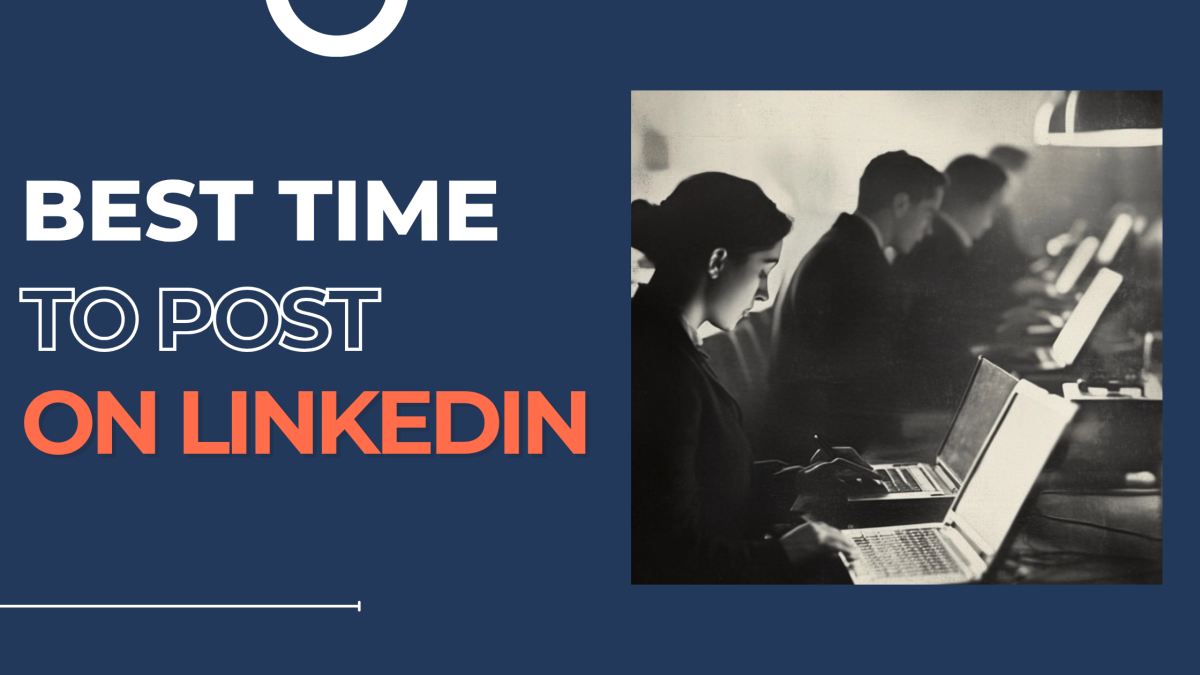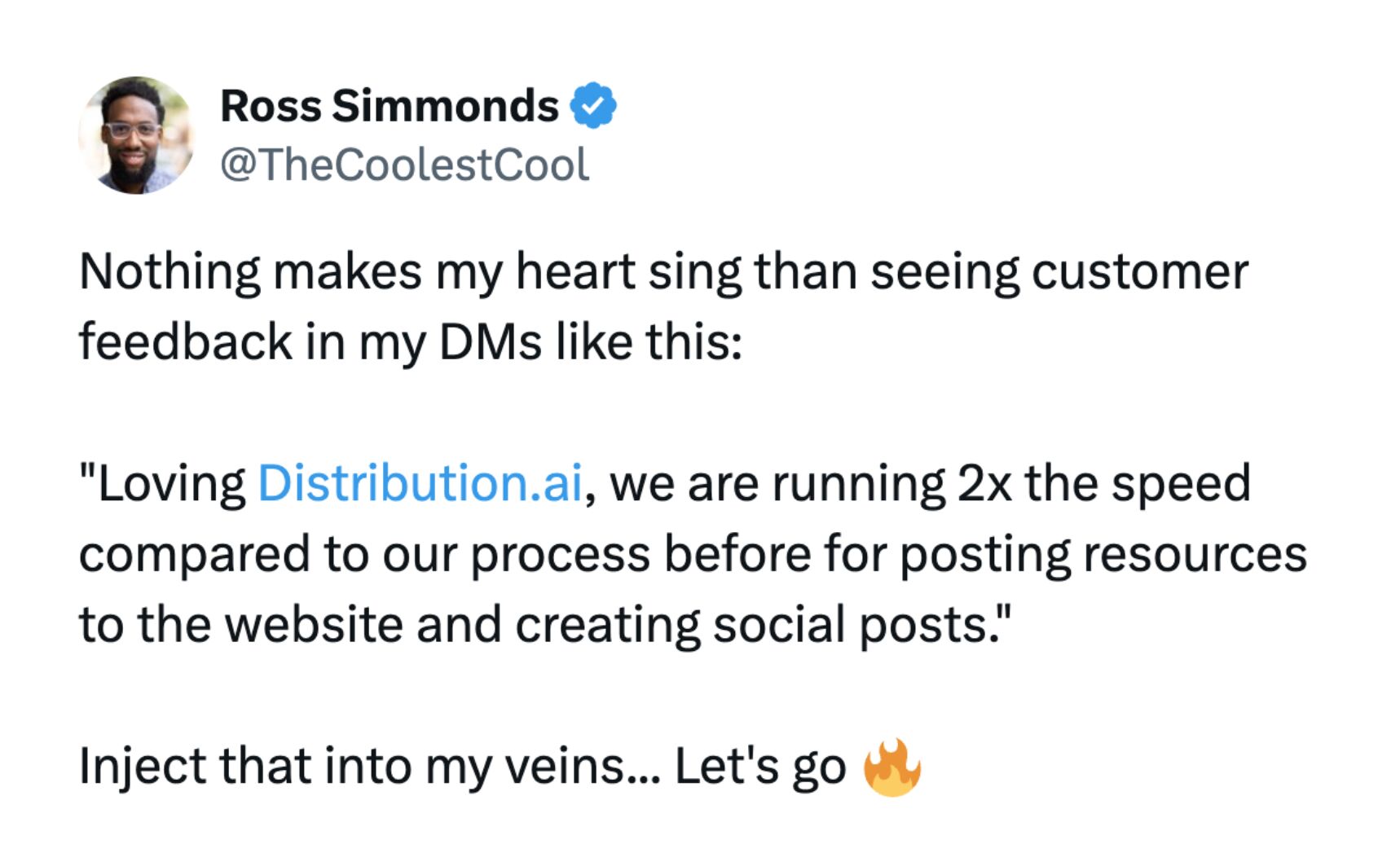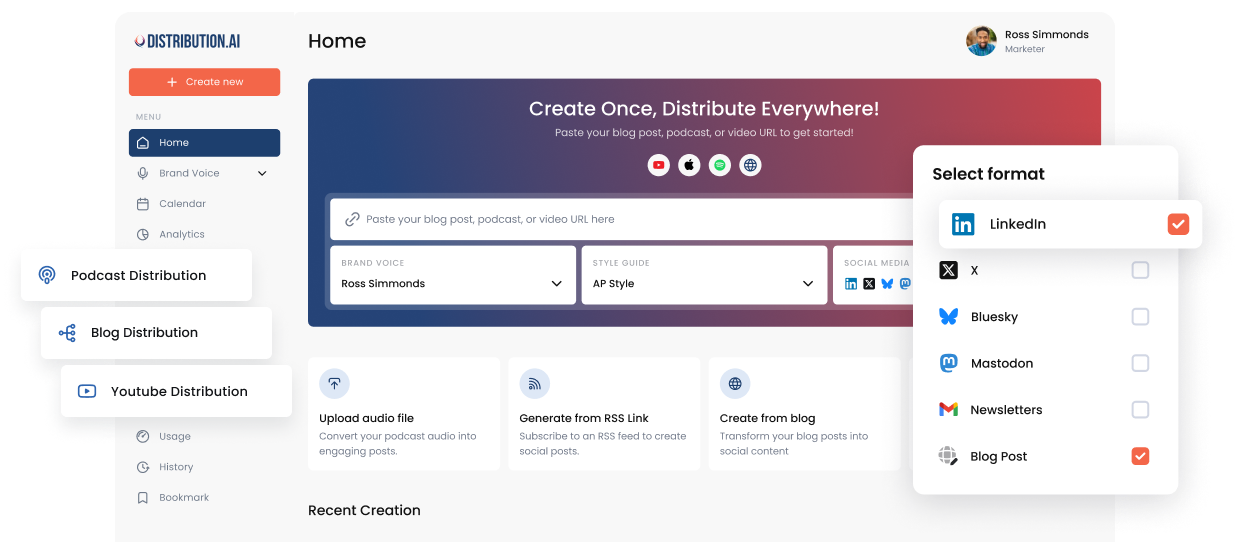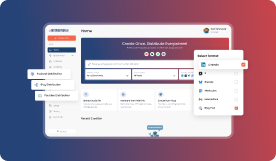Best Time to Post on LinkedIn: An Actionable Guide Based on Audience and Intent Segmentation
Discover the best times to post on LinkedIn based on content intent, not generic peak hours. Includes day-by-day breakdown for 2025.

Every “best time to post on LinkedIn” guide you’ve seen makes the same mistake.
They crunch data from millions of social media posts, find the posting times with the highest engagement, compile them into a colorful infographic, and call it strategy.
That’s not strategy. That’s crowd-following.
When every LinkedIn marketing guide tells you to post at 9 AM on Tuesday, you’re not optimizing for opportunity, but for competition.
You’re fighting for attention in the noisiest room on the platform.
The real question isn’t when most people scroll LinkedIn. It’s when your target audience is mentally ready to engage with what you’re posting.
Here’s what we did differently: we dissected every major timing guide, tested their assumptions against real performance data, and kept only what moves the needle.
What you’re getting is a distilled framework that accounts for audience psychology and content intent, not just traffic patterns.
But this is your starting baseline. The smartest move is to adapt these principles to your specific industry, audience behavior, and business goals.
Is There a Best Time to Post on LinkedIn?
Here’s the uncomfortable truth: there’s no universal “best time” that works for every LinkedIn post.
The platform serves different functions throughout the workday, and your audience’s headspace shifts with their professional priorities.
A C-level executive checking LinkedIn at 9 AM is hunting for industry insights to inform strategic decisions.
That same executive scrolling during lunch is more likely to engage with a quick poll or drop a comment on something that sparked their interest.
LinkedIn’s algorithm prioritizes content that generates meaningful engagement (thoughtful comments, saves, extended reading time) over posts that simply grab eyeballs during peak traffic hours.
Instead of asking “when are people online,” you should be asking “when is my audience in the right mindset to give me the type of engagement that matters for my goals?”
Best Times to Post on LinkedIn Based on What You’re Trying to Accomplish
Here’s how to align your posting schedule with your actual objectives instead of chasing vanity metrics:
| Content Type | What You're Really Doing | Best Days & Times | Why This Works |
|---|---|---|---|
| Thought Leadership | Demonstrating expertise and vision to decision-makers | Tue–Thu, 9:00–11:00 AM | Mid-morning weekdays catch senior professionals after email triage but before meetings pile up |
| Educational Content | Positioning your brand as a valuable resource | Mon or Thu, 8:00–10:00 AM | Monday captures planning-mode traffic; Thursday sustains attention for deep content |
| Community Engagement | Positioning your brand as a valuable resource | Wed–Fri, 11:00 AM–1:00 PM | Lunchtime scrolling encourages quick interactions that boost algorithmic reach |
| Major Announcements | Maximizing visibility for important news | Tue or Wed, 10:00 AM–12:00 PM | Avoids the 9 AM flood while getting full business-day momentum |
| Industry Analysis | Joining conversations | Tue/Thu, 9:00–10:30 AM or 4:00–5:00 PM | Morning hits research mode; late afternoon sparks overnight debate |
| Conversion Content | Driving actual business actions | Tue–Thu, 10:00 AM–12:00 PM or 2:00–3:30 PM | Aligns with focused work periods when people act on solutions |
Thought Leadership

When publishing thought leadership content like industry analysis and bold predictions, you need your audience’s full attention.
The sweet spot is Tuesday through Thursday, 9:00 to 11:00 AM. This timing catches senior professionals after they’ve handled their initial email dump but before their calendars explode with meetings.
They’re actively seeking insights and have the mental bandwidth for substantial content.
Your algorithmic goal here is dwell time.
LinkedIn’s algorithm interprets how long users spend reading your post as a quality signal. Long-form posts and detailed carousels crush it in this window.
Educational Content

Educational posts like frameworks, how-to guides, and data insights serve a different purpose. They help your personal brand by positioning you as a genuinely useful domain expert. Post these on Monday or Thursday, 8:00 to 10:00 AM.
Monday morning captures professionals in planning mode, actively hunting for resources to structure their week. Thursday morning hits them during their final productivity sprint before weekend mode kicks in.
Target the algorithmic signals that matter: saves and shares. When users save your content, they’re telling the algorithm it’s valuable enough to revisit later.
Also Check Out: Artificial Intelligence for Social Media Managers
Community Engagement

Not every LinkedIn post needs to be a masterpiece. Sometimes your goal is simple conversation and reach expansion through comments.
For polls, questions, and debate starters, post Wednesday through Friday, 11:00 AM to 1:00 PM.
This targets the lunchtime scroll when professionals take mental breaks.
Their cognitive load is lower, making them open to quick interactions that don’t require deep focus.
The goal is to build a positive feedback loop of comments by aiming for strong initial momentum. The LinkedIn algorithm favors posts that generate rapid discussion.
Major Announcements

Major announcements, like product launches, funding rounds, and awards, require sustained high engagement for maximum effect. Post on Tuesday or Wednesday, 10:00 AM to 12:00 PM.
This timing sidesteps the 9:00 AM content flood while still catching peak activity.
Your announcement gets a full business day to build momentum, get seen by partners and press, become a lunch break conversation, and get amplified by your network.
Read More: The Only Social Selling Guide You’ll Need in 2025 [Backed by Data]
Industry Analysis

Market commentary and trend analysis work in two distinct windows.
Tuesday or Thursday, 9:00 to 10:30 AM, reaches analysts and decision-makers in research mode, seeking perspectives to inform their thinking.
The contrarian play: 4:00 to 5:00 PM. End-of-day posts can spark debates that carry overnight momentum, resurfacing in morning feeds across different time zones.
Conversion Content

When you’re asking for action, such as demo requests, downloads, event registrations, etc., you need the highest intent audience.
Avoid posting during passive morning scrolling.
Instead, target mid-morning and early afternoon “task windows” when decision-makers are actively problem-solving.
Optimal posting times: Tuesday through Thursday, 10:00 AM to 12:00 PM and 2:00 to 3:30 PM.
These align with focused work periods when your solution is most likely to drive actual business results.
Also check out: Best Times to Post on Social Media: Platform-Specific Guide for 2025
Best Days to Post on LinkedIn: A Strategy Guide for Each Day of the Week

Monday
Monday sets the tone for professional priorities.
Lead with educational content in the morning. Think frameworks, how-to guides, or data that helps them work smarter.
Strategic focus: Position your LinkedIn profile or brand as a valuable resource when people are most receptive to planning tools.
Tuesday
Tuesday delivers peak engagement across all professional content types.
Use the 9:00 to 11:00 AM window for your most important thought leadership pieces.
For major announcements, the 10:00 AM to 12:00 PM slot gets the most engagement without getting lost in the morning content flood.
Strategic focus: Deploy your highest-impact content when audience attention and algorithmic rewards align perfectly.
Wednesday
Wednesday offers the week’s most versatile engagement opportunities.
The lunchtime window (11:00 AM to 1:00 PM) is perfect for community engagement— polls, questions, conversation starters.
The morning and early afternoon windows work well for conversion-focused content.
Strategic focus: Balance relationship-building with business objectives.
Thursday
Thursday represents your last shot at deep, focused engagement before weekend cognitive decline kicks in.
The wide engagement window from mid-morning through early afternoon makes it excellent for both thought leadership and educational content.
Strategic focus: Capture sustained attention for your most substantial content pieces.
Friday
Attention spans shorten as the week winds down.
Focus on lighter, connection-oriented posts. Community engagement during lunch can work, but avoid heavy analytical content that requires mental effort.
Strategic focus: Maintain presence without demanding intense focus from your audience.
The Weekend
Most social media marketing advice dismisses weekends as the worst days due to lower overall traffic.
But lower traffic means lower competition. A well-placed thought leadership piece on Sunday evening can capture the focused, uncluttered feeds of executives planning their upcoming week.
Use this sparingly, but recognize the opportunity when you have truly strategic content for founders and senior decision-makers.
The Real Challenge: Creating Enough Content
This intent-based approach reveals a deeper problem: how do you consistently create enough varied content to fill these posting times?
You need thought leadership for Tuesday mornings, engagement prompts for Wednesday lunch, educational content for Thursday mornings, and conversion posts for afternoon task windows.
Most marketing teams can’t sustain this volume manually without burning out.
The solution is to make your content work harder. The most successful brands don’t just create more content; they multiply the impact of every piece they create.
This is where intelligent content repurposing becomes essential. One substantial piece of pillar content— a webinar, detailed blog post, or research report—can fuel an entire week’s worth of strategically timed posts:
- Main insights become thought leadership content for Tuesday morning
- Key frameworks get turned into educational carousels for Thursday
- Interesting data points spark engagement prompts for Wednesday lunch
- Actionable takeaways drive conversion posts in afternoon task windows
This shifts your role from content creator to content strategist; analyzing post performance, refining your posting schedule, and engaging with the community your scaled presence builds.
Read More: How to Write a Professional LinkedIn Headline [30+ Templates]
How to Implement This (Without Losing Your Mind)
1. Audit Your Current LinkedIn Content
Categorize your existing posts by intent. Most brands discover they’re heavy on announcements and light on thought leadership or community engagement. Fix that imbalance first.
2. Map Content to Your Posting Schedule
Plan pillar content pieces first, then map derivative assets into appropriate time slots. One expert interview can fuel multiple post types across the optimal windows.
3. Track Intent-Specific Metrics That Matter
- Thought leadership: Monitor shares, saves, and profile views
- Community engagement: Track comment velocity and total comments
- Conversion content: Focus on click-through rates and lead quality, not vanity metrics
4. Test and Refine Based on Your Audience
This framework provides a data-backed starting point, but your specific audience might behave differently. Use LinkedIn Analytics along with social media management tools to validate and adjust these windows for your industry and target demographic.
Read Also: How To Create A Social Media Plan
Scaling Your Strategy with Distribution AI

Putting all this into practice can be a lot of work unless. Unless you automate it.
This is where Distribution AI shines. Its AI agents can repurpose and schedule your content at scale.
For example, when you publish a detailed blog post on marketing strategy, Distribution AI can instantly transform that one blog into a suite of LinkedIn posts, each tailored by timing and intent.
- Blog to LinkedIn Carousel: A 10-point blog list can become an afternoon carousel at 12 PM, when users are ready to swipe through tips.
- Podcast to Poll: Your latest podcast can yield a thought-leadership snippet posted at 11 AM on Monday to spark discussion.
- One Content, Many Posts: In practice, one article might produce 5–15 LinkedIn posts (quotes, summaries, questions) automatically.
- Automated Scheduling: You can queue these outputs into an optimized calendar. The AI even plugs into your LinkedIn, scheduling each piece at the right moment (e.g., leadership posts at lunch, Q&A posts midweek afternoon) without manual effort.
- Brand Consistency: Every post keeps your tone intact while fitting the format (text, image, poll) and timing strategy. This frees your team to focus on high-level strategy, not on repetitive posting tasks.
In short, Distribution AI acts like a second brain for your content.

It makes your content “work for you, not the other way around” by ensuring your insights appear in front of the right people at the right time.
For busy content leads, this is a force multiplier: a single long read or podcast can fuel a week (or more) of LinkedIn engagement, all scheduled optimally and fine-tuned by analytics feedback.
Read Also: How to Turn One YouTube Video Into 5 Assets
The Bottom Line
The LinkedIn timing advice flooding the internet suffers from a fundamental flaw: it averages millions of data points without proper segmentation, producing generic recommendations that ignore audience psychology and content intent.
The result? Clean-looking charts that push you to compete in the noisiest possible environment, exactly when everyone else has read the same social media marketing guide.
There is no single best time to post on LinkedIn. There are only optimal time frames to achieve specific objectives with specific audiences.
Success requires matching your message to your audience’s mindset, not just their online activity patterns.
But mastering this approach reveals the real challenge: executing it consistently requires more content variety than most teams can manually sustain.
The smartest marketers solve this through intelligent repurposing systems that multiply every piece of pillar content into strategically timed campaign libraries.
Check out how Distribution AI does this with a free 15-day trial
Frequently Asked Questions
1. What is the best time to post on LinkedIn?
The best time depends on what you’re trying to accomplish with your post.
- Thought leadership content: Tuesday-Thursday, 9:00-11:00 AM when decision-makers are focused and seeking strategic insights.
- Community engagement posts: Wednesday-Friday, 11:00 AM-1:00 PM during lunch breaks when people interact more casually.
- Major announcements: Tuesday-Wednesday, 10:00 AM-12:00 PM to maximize full business-day visibility.
2. What are the peak engagement times for posting on LinkedIn?
Peak engagement happens Tuesday-Thursday from 9:00-11:00 AM and 10:00 AM-12:00 PM for professional content.
Lunchtime posts (11:00 AM-1:00 PM) on Wednesday-Friday generate strong community interaction because people are taking mental breaks and are more open to quick engagement.
3. How can I determine the optimal posting times for my specific audience?
Start with the framework above, then use your own data to refine it.
LinkedIn Analytics shows you when your audience is most active. Test the same content type at different times and track meaningful engagement like saves, shares, and thoughtful comments.
Look for patterns over 2-3 weeks. Your B2B software audience might behave differently from your consulting audience, even within the same time zones.
4. Is it better to post on LinkedIn in the morning or at night?
Morning posts almost always outperform evening posts on LinkedIn.
LinkedIn is primarily used during business hours when professionals are in “work mode.” Morning posts from 8:00-11:00 AM catch people when they’re mentally focused and actively seeking professional content.
Evening posts typically underperform unless you’re targeting executives or founders who are active on weekends.
5. What are the best days to post on LinkedIn?
Tuesday through Thursday are your strongest days for professional content.
- Tuesday: Ideal for high-impact thought leadership when people are fully engaged in the workweek.
- Wednesday: Perfect for community engagement and conversion-focused content.
- Thursday: Great for educational content before attention spans drop for the weekend.
- Monday: Works for planning-focused posts as people organize their week.
Fridays and weekends see lower engagement, but also lower competition if you have something truly valuable to share.
6. Why does posting time matter on LinkedIn?
LinkedIn’s algorithm prioritizes meaningful engagement over quick interactions.
When you post at the right time, you’re more likely to get thoughtful comments, shares, and extended reading time in the first few hours. These quality signals tell the algorithm your content is worth showing to more people.
Post at the wrong time, and your content might get buried before your audience even sees it.
7. What are the best LinkedIn marketing strategies for 2025?
The smartest approach is matching your content type to your audience’s mindset, not just their online activity.
- Create varied content that serves different purposes throughout the week
- Use intelligent repurposing to multiply your pillar content into multiple strategic posts
- Focus on engagement quality over vanity metrics like total likes
- Build presence consistently, rather than posting randomly when you remember
Platforms like Distribution AI can help you create and distribute multiple assets from a single piece of content.
Frequently Asked Questions
Promote, repurpose & distribute your content with AI
Start 15-Day Free Trial
